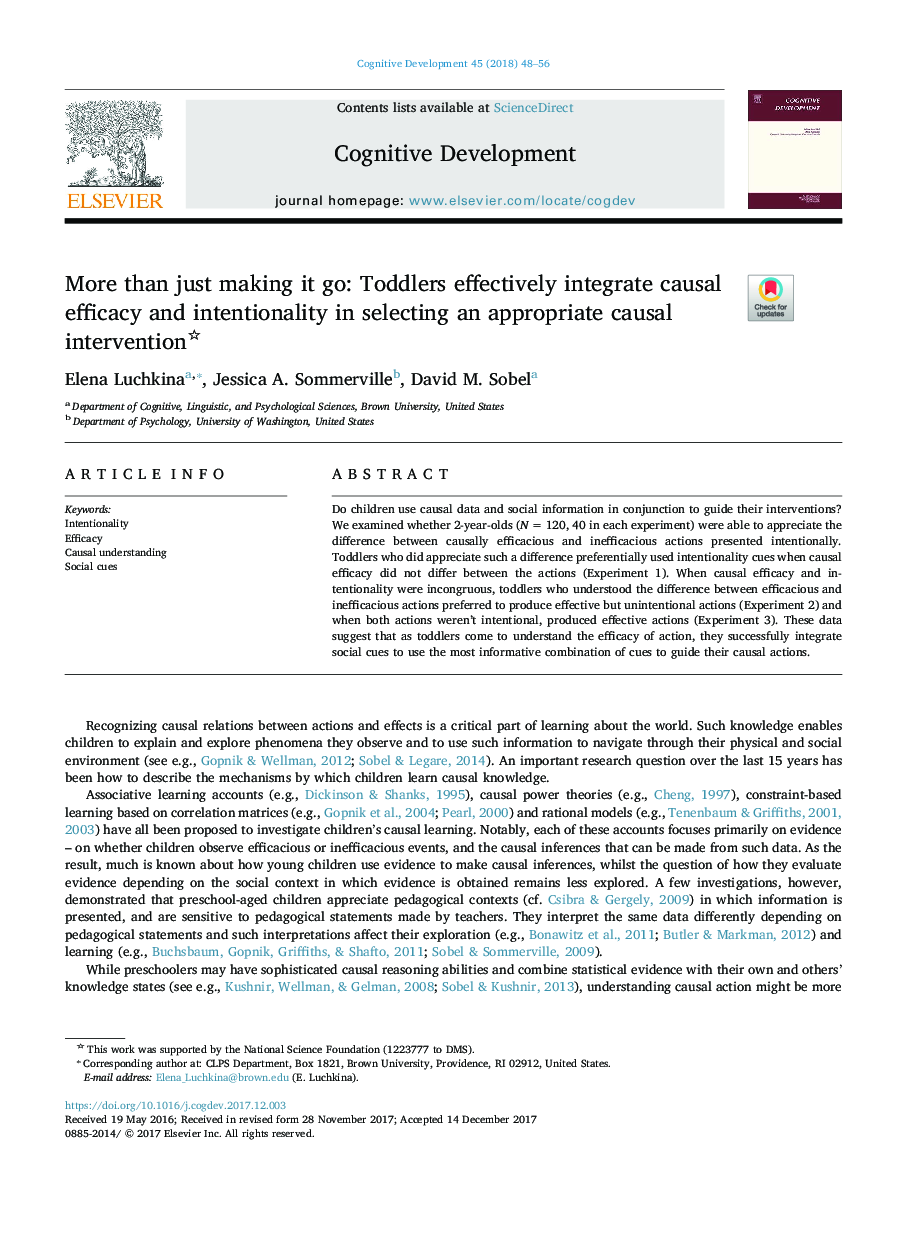| Article ID | Journal | Published Year | Pages | File Type |
|---|---|---|---|---|
| 7272261 | Cognitive Development | 2018 | 9 Pages |
Abstract
Do children use causal data and social information in conjunction to guide their interventions? We examined whether 2-year-olds (Nâ¯=â¯120, 40 in each experiment) were able to appreciate the difference between causally efficacious and inefficacious actions presented intentionally. Toddlers who did appreciate such a difference preferentially used intentionality cues when causal efficacy did not differ between the actions (Experiment 1). When causal efficacy and intentionality were incongruous, toddlers who understood the difference between efficacious and inefficacious actions preferred to produce effective but unintentional actions (Experiment 2) and when both actions weren't intentional, produced effective actions (Experiment 3). These data suggest that as toddlers come to understand the efficacy of action, they successfully integrate social cues to use the most informative combination of cues to guide their causal actions.
Related Topics
Social Sciences and Humanities
Psychology
Developmental and Educational Psychology
Authors
Elena Luchkina, Jessica A. Sommerville, David M. Sobel,
